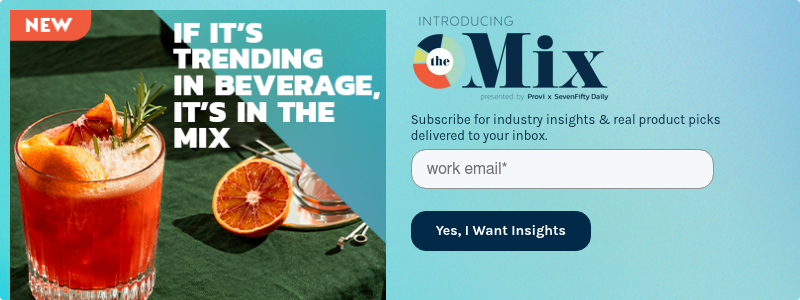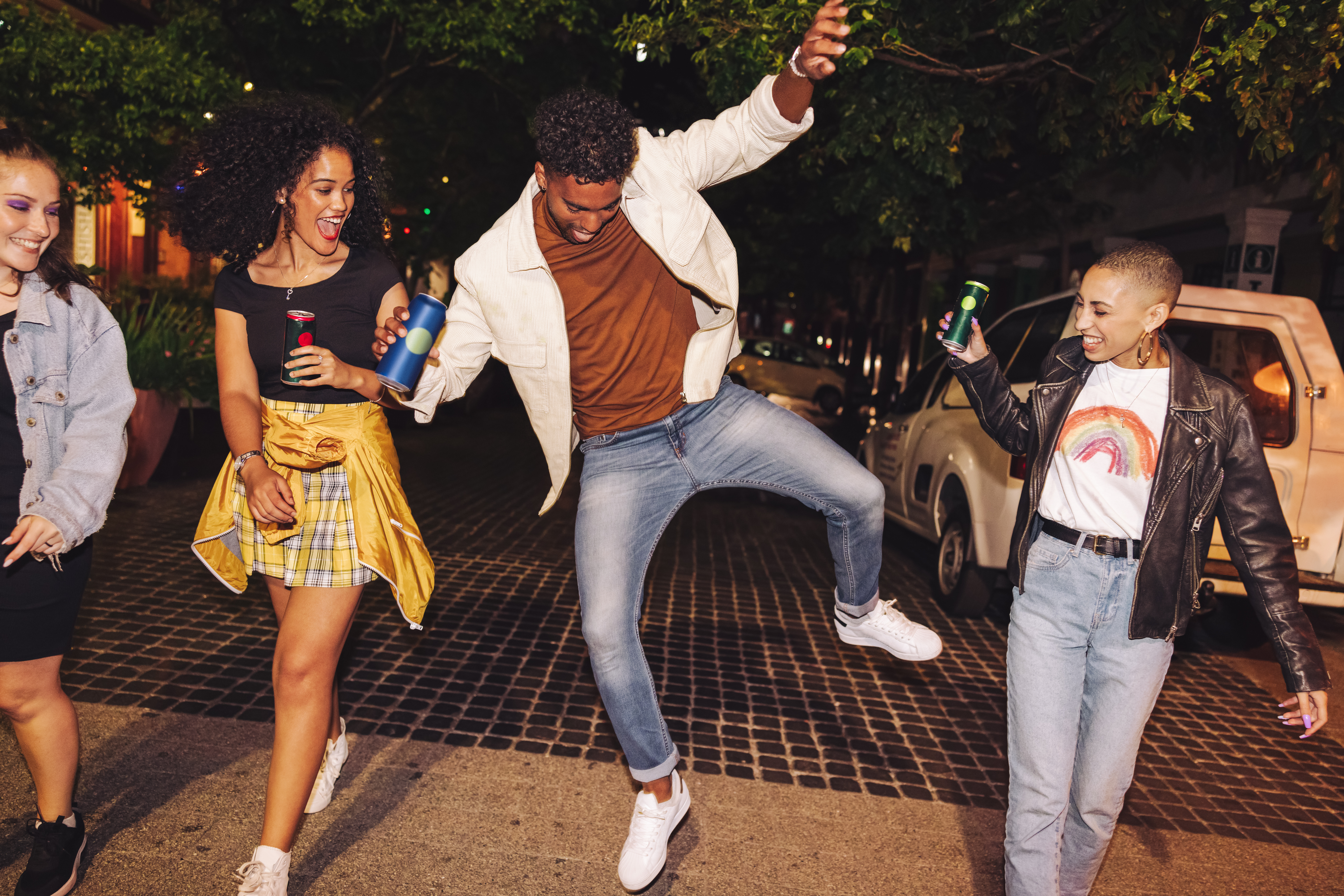Behavioral and consumer trends shift with each generation, but none more than with Gen Z. The impact is seen everywhere — from workplace sentiments to food consumption to how they follow the news. The beverage alcohol industry is no exception. Gen Z’s influence on bev-alc is becoming clear and is fundamentally changing the way brands market and do business, including the very products they produce.
How is Gen Z, well into the age to legally consume alcohol, challenging the status quo and how is the industry evolving to cater to their needs? We must better understand Gen Z’s drinking habits to best answer that.
Understanding Gen Z's Drinking Habits Vs. Older Generations
In general, Gen Zers are drinking less than previous generations. Their values, characteristics, and demographics are all important factors contributing to this shift in behavior.

Consumption Patterns and Influences on Drinking Habits
Gen Z is reported to drink less alcohol compared to Millennials and previous generations. A World Finance report shows that Gen Zers drink on average 20 percent less than millennials, who also drink less than older generations.
The increased awareness of the dangers and effects of alcohol and the rise of conscious consumption as a lifestyle is the primary driver of this trend. That same study states that 86 percent of Gen Z consumers believe that their mental health is as significant as their physical health when considering drinking alcohol.
Underage drinking has been in decline across most high-income countries for the last 20 years. Today’s youth are more likely to abstain completely than any generation before. Those who do imbibe tend to drink less often and consume smaller amounts. This segment of consumers is generally considered to be more cautious and risk-averse than previous generations, regarding their physical and mental well-being, both of which are the primary influences on their drinking habits.
According to a new NCSolutions Analysis, the share of Gen Zers who plan to drink less alcohol in 2024 rose 53 percent year over year. No- and low-alcoholic products have helped contribute to this rise in teetotalling. According to the Drizly Consumer Trend Report, 38 percent of Gen Z respondents are more willing to try non-alcoholic drinks, which is significantly higher than other age groups.
But not all Gen Zers abstain from consuming alcohol. So what are they drinking? When it comes to what variety of alcohol Gen Zers prefer, spirits have the largest consumption volume. A Statista consumer goods report shows that 25% of the market share for spirit-based seltzers is attributed to consumers aged 21 to 34, more than any other age group. Within the category, tequila and other clear spirits are the preferred choice. Consumers aged 25 to 34 (a mix of older Gen Z and younger Millennials) represented the largest share of tequila drinkers in the United States in 2021 according to the report.
Moderation and Socializing
Both Gen Z and Millennials are mindful of their alcohol consumption, with a notable portion actively limiting their intake. Gen Z, in particular, prefers beverages that allow them to socialize without the emphasis on alcohol, indicating a shift towards more moderate drinking practices and a preference for socializing without drinking.
An additional factor that has also contributed to lower alcohol consumption among Gen Z is that social interactions now occur both online and offline, and digital spaces are often where many young people increasingly spend time engaging with others. As drinking alcohol is not a central activity in these digital spaces, this shift has naturally resulted in lower alcohol consumption.
Social Media’s Influence on Consumption Behavior
Social media has played a significant role in promoting healthier lifestyles, including advocating for reduced alcohol consumption or avoidance of alcohol entirely. The visibility of healthier lifestyles has resulted in Gen Z showing a preference for lower alcohol consumption. Social media has also helped reduce the stigma around mental health discussions, prompting Gen Z to be more cautious about their drinking habits, as they acknowledge the impact of alcohol on mental health.
The content that Gen Z consumes on social media has an impact on their perceptions and decisions about drinking. These platforms are rife with content promoting health and wellness, including the benefits of reducing alcohol consumption or abstaining entirely. Influencers and peers often share their experiences with "Dry January," workouts, and healthy eating, which can inspire followers to adopt similar habits. This visibility of healthier lifestyles has contributed to Gen Z's inclination toward drinking less.
But it’s not just health and wellness content that Gen Z is consuming. According to a NielsenIQ 2024 Trend Report, 54 percent of Gen Zers use TikTok to browse food and drink trends. This shows that this generation of consumers is interested in food and drink trends, even if they’re less interested in consuming alcoholic beverages than previous generations.
The Shift Towards Quality Over Quantity
While it’s true that Gen Zers are drinking less, more importantly for the industry, they’re drinking better. Gen Zers prioritize experiences and quality when it comes to their beverage choices.
While only a small window into the overall market, findings from Drizly suggest that Gen Zers are more likely to drink tequila, Champagne and pre-mixed cocktails than the average alcohol consumer. While they still drink beer, they prefer beer alternatives such as hard lemonade, hard iced tea, malt liquor, hard seltzer and hard kombucha. While only three percent of total wine sales on Drizly stated in the report was purchased by Gen Z buyers, they over-index on certain wine subcategories, most notably wine spritzers (seven percent), Champagne and sparkling wines (five percent) and rosé (five percent). These products traditionally have higher price points in the market.
“It is worth noting that it is very early days for Gen Z drinkers in the beverage alcohol market and close monitoring of their behavior over time will be required to see how their tastes evolve,” said Richard Halstead, COO of Consumer Research, IWSR in a report on how Gen Z approaches beverage alcohol. “However, some of their behaviors — reduction in alcohol quantity consumed, preference for cocktails and premium beverages — is also apparent in the preceding generation known as Millennials (aged from their late 20s to early 40s).”
This data suggests a clear path forward for alcohol brands. To be successful in the future, they will need to focus on producing high-quality products, including those with low- or no-alcohol content. On the flip side, the profitability of lower-end, mass-produced products could diminish unless producers can compete as the most cost-efficient in the market or maintain a solid foothold with traditional, older consumer bases. This indicates a pivotal shift towards prioritizing innovation, quality and strategic branding to cater to evolving consumer tastes.
Gen Z also prioritizes values. This cohort of consumers care about a brand’s ethical and social stance more than other generations, leading them to purchase from brands they feel best align with their values. Fifty-seven percent of Gen Zers said they would choose brands that promote good values and/or ethical practices. According to Drizly, "Gen Z over-indexes on sales of brands owned by historically marginalized groups, particularly women-owned, Hispanic-owned and AAPI-owned brands."
With Gen Z’s shift toward more premium products that align with their values, the question now is how the industry is responding.
How the Beverage Industry is Responding to Gen Z's Preferences
Product Innovation
Product innovation is driving the beverage industry forward thanks to Gen Z. Innovations include the rise of psychoactive ingredients for controlled sobriety, tech-enabled beverages for enhanced wellness such as those infused with adaptogens and other wellness products, and products that embrace global flavors, allowing for a more diverse and engaging drinking experience.
Additionally, the development of healthier alternatives is a point of focus for alcohol brands. Low-calorie, low-sugar, organic and alcohol-free beer, wine and spirits are targeted to this generation (as well as others) as more consumers seek healthier alternatives to add to their drinking experience.
Branding and Marketing Strategies
As Gen Z spends more time online in digital spaces, alcohol brands have moved online, too, to market more directly to them. Brands target Gen Z consumers through social media, whether it's through influencer marketing via TikTok and Instagram or directly through advertising on other platforms. In fact, Gen Z consumers are 45 percent more likely to learn about new beverage brands through social media advertising — highlighting how important a strong social media strategy is the key to attracting this growing population of consumers.
However, messaging is key. Brands must emphasize their brand values front and center. Sustainability initiatives and ethical production and sourcing methods are showing up more and more in branding, both in digital and physical spaces.
A report by Gen Z content studio Adolescent Content, reveals a few of the brand values that influence Gen Z's purchase intent, including sustainable business practices (92%), affordability (91%), ethical business practices (90%), inclusivity (87%) and overall shared principles (86%).
A Numerator report states that Smirnoff Ice, Mike’s Hard, and Seagram’s, which focus on socializing and personal expression in marketing, are currently winning the fight over Gen Z spending. Mainstream brands like Coors, have also found a way to succeed, cultivating a social presence centered around environmental issues and an active, outdoorsy lifestyle.
As Gen Z consumers align themselves directly with brands that align with their values, alcohol producers must implement their social and environmental initiatives directly into their brand identity to capture their attention.
Distribution and Sales Channels
With younger consumers online, many brands have invested heavily in B2C marketplaces. Drizly (now UberEats), Saucy and other marketplaces are showing up in cities around the country, making it easy for consumers to order alcohol for delivery from nearby retail stores.
Even more, direct-to-consumer models are increasingly popular options for brands. Subscription services for curated beverage selections are favored alternatives to visiting a retail store for more tech-savvy consumers. These business models exploded with the onset of the pandemic, as on-premise businesses closed and consumers sought new methods of sourcing. Despite a slowdown post-pandemic, the industry shows signs of renewed growth.
Looking Forward
The evolving behaviors and consumption trends of Gen Z are reshaping the beverage alcohol industry in profound ways. This generation is diverging from traditional paths and is influencing how brands strategize their marketing and product development. With Gen Z drinking less than their predecessors and showing a marked preference for quality over quantity, the industry is witnessing a fundamental shift. Brands that resonate with Gen Z through socializing, personal expression and alignment with their environmental and social values will be best equipped for success, especially as younger consumers replace those aging out.



Comments